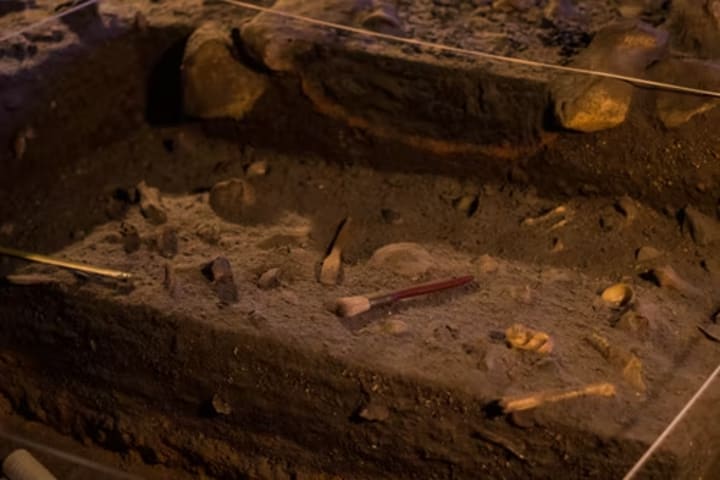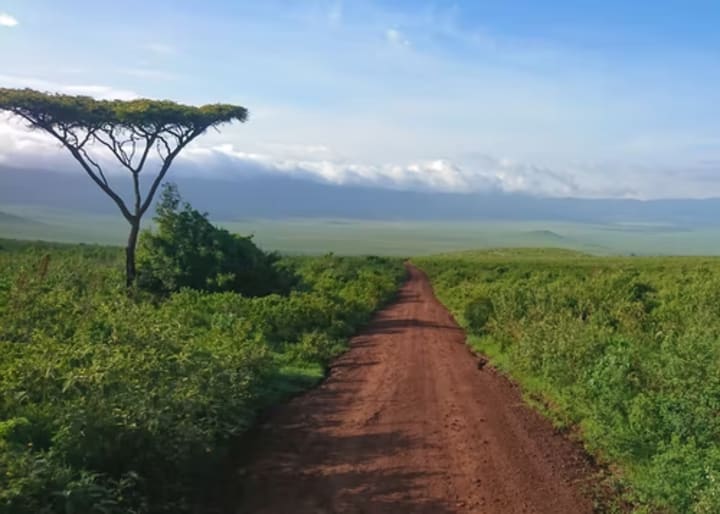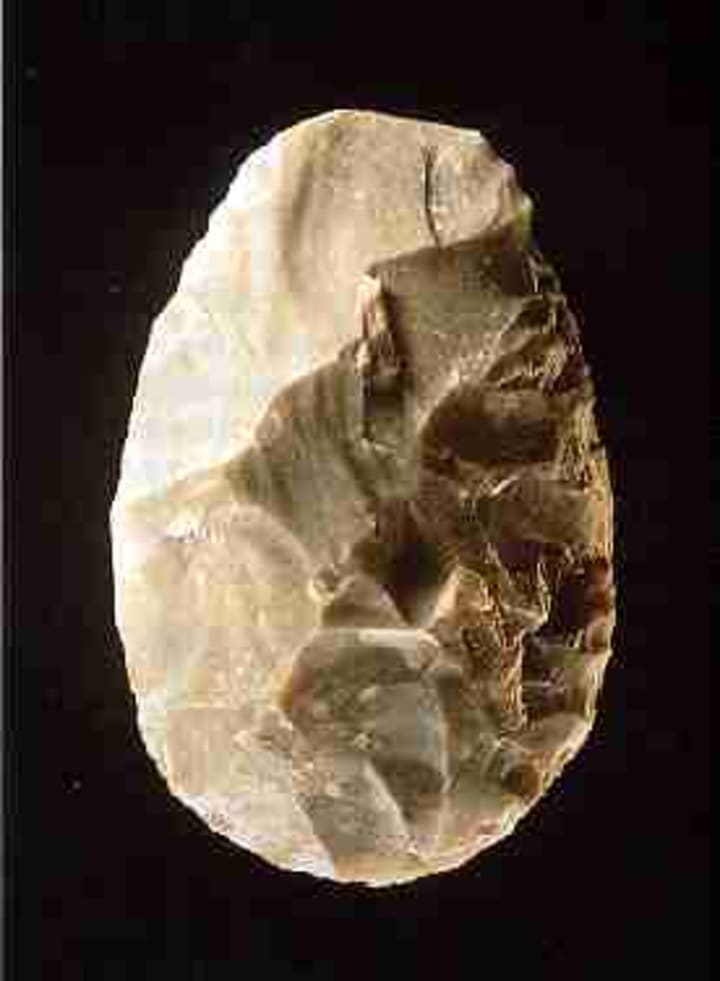Hunting vs. Scavenging
The Age-Old Question of the Early Hominins

As a student of Bio-Anthropology and Archaeology and a huge fan of the television show Bones, I have been fascinated by the effects of taphonomy on remains uncovered at archaeological digs.
the taphonomic processes that have an impact on biological remains include surface weathering, like rain, snow, and heat. In addition, movement or transportation of the remains can either preserve or deteriorate the specimens. In the case of movement caused by animals, recovery of an entire specimen is less likely as opposed to a ritual burial. One of the most significant taphonomic processes includes marks left by man-made tools or left by predators from biting and gnawing on animal remains. The study of these marks has helped archaeologists and paleontologists to better understand early hominin behavior; answering the question of whether these early hominins were hunters or scavengers.

Taphonomy is important in the fields of biological anthropology and its subfield paleoanthropology because it provides answers to the questions that have been posited regarding various hominins. This provides investigators and researchers the opportunity to discover the practices of early hominins as well as understand the environments in which they lived and/or developed both socially and culturally. The question that this project has asked is whether these hominins, specifically early Homo and Homo ergaster/erectus were hunters or gatherers. In How Humans Evolved, Robert Boyd states that "taphonomic evidence suggests that early hominins acquired meat both by scavenging and by hunting." This evidence has been found at various sites like Olduvai Gorge and Boxgrove Quarry. The tools located at these sites and the striations left on animal remains have provided proof that the early hominins loved meat.
The tools at the sites of Olduvai Gorge and Boxgrove Quarry have been grouped and categorized as Oldowan and Archeulian. The Oldowan tool industry consists of simple stone tools that were made by chipping away or flaking off pieces of a core stone with the use of a hammer stone. It is likely that both the flakes and the cores were used as tools. This tool industry is found in Africa at sites that date from around 2.5 million years ago. The earliest stone industry was discovered by paleoanthropologists, L.S.B. Leaky and Mary Douglas Leaky at the Olduvai Gorge, which is located in Tanzania.

Mary Leakey classified and grouped the stone tools in the Oldowan tradition; identifying it as the earliest stone-making tradition, dating from about 2.6 million to 2 million years ago. The Oldowan tools were named after Olduvai Gorge. The early hominins used simple techniques to create a limited set of tools that may have included the use of the bifacial chopper, hammer, stone, flake scrapers, and a heavy-duty scraper. It is not known which hominin species made these early stone tools; several hypotheses have been presented.
The summary chart of Hominin characteristics does indicate that the Oldowan tools were used by early Homo. According to Brian F. Fagan and Nadia Durrani, the authors of Archaeology: a Brief Introduction, the Olduvai Gorge cache sites were üsed by very early humans [designated as] Homo Habilis." In addition, this form of stone tool making is a Mode 1 tool industry. During the Oldowan tool industry, the advancement of tool making emerges, revealing what is now classified as the Acheulian tool industry.

The Acheulian tool industry is a more advanced tool industry that developed from the earlier Oldowan tool-making industry. The Acheulian method of tool making is considered a Mode 2 tool industry found at cache sites dating between 1.6 million years ago to 0.3 million years ago. This type of tool-making has been linked to the Homo ergaster and some archaic Homo sapiens. The most significant identifier of this tool industry is the teardrop-shaped hand axes as well as the blunt cleavers. Homo ergaster/erectus made Acheulean tools with evidence showing that they were the only hominin species in Africa after 1.4 million years ago.
The Acheulian hand axes were general-purpose artifacts used widely by archaic humans in Africa, Europe, and southern Asia from before a million years ago up to after 200,000 years ago. The Boxgrove Quarry site has provided some really interesting advances in tool use and tool-making. One of the most interesting finds at this site was that of a bone tool that was used for refining flint bifaces. The bone tool shows that these early hominins understood the properties of different organic materials and how tools could be made to improve the manufacture of other tools. This evidence suggests that hominins, 500,000 years ago, had advanced, having obtained cognitive, social, and cultural sophistication; ultimately engaging in cooperative behavior, like hunting and butchering animals.
The tools of the Oldowan and Acheulean industries are only one piece of the puzzle. The remains on which the tools were used give us additional information about the culture and behaviors of the early hominins: the early Homo and Homo ergaster/erectus. At both the Olduvai Gorge and Boxgrove Quarry cache sites the animal bone fragments, having been preserved from major taphonomy, were the key to understanding whether these early hominins were hunters or scavengers. At both sites, the bones recovered contained both tooth marks and stone tool marks. Scans of these marks show that the cut mark made by the stone tools were overlain by animal tooth marks. This suggests that the large predatory carnivores scavenged after the hominins had processed their kill.
Specifically, looking at the Olduvai Gorge cache site with the scattering of stone tools and animal remains it was determined that this site was a killing and processing site, rather than a home base. The evidence at this site also shows that it was used over and over during the span of 50 - 75 years. Because the bones were not intensively processed by the hominins, we can conclude that it was done quickly to avoid the large predatory carnivores in the area. The bones left behind: subject to weathering. This activity suggests that the Olduvai Gorge cache site was considered a central place where carcasses were brought for processing after a kill; this accumulating bones and stone over time.
If this isn't enough to convince the reader that early hominins were hunters, try making your own stone tools and then use them to carve meat. Well, you don't have to. Investigators and researchers have done just that. First by creating stone tools using a hammer stone to chip away flakes of a core stone until the stone tool is shaped for the purpose of cutting/butchering. These researchers were able to create the tools and use them on a large animal. The striations left on the bones were consistent with the ones found on ancient remains at the cache sites of Olduvai Gorge and Boxgrove Quarry.
In another study, bones with some meat left on them were given to felids at the Moorpark Learning Zoo. After these predatory carnivores were finished with the bones, they were cleaned/processed and then examined. The examination revealed the pitting that occurs when animals bite or gnaw the bones of animals. The depth of the pitting varies depending on the species and the size of the animal.
The experiments demonstrated in the hit television series, Bones, highlighted the amazing work that anthropologists and archaeologists do to better understand our past and the world that we live in.
References:
“Acheulean Industry.” Encyclopædia Britannica, Encyclopædia Britannica, Inc., 17 Oct. 2016, www.britannica.com/topic/Acheulean-industry.
Boyd, Robert, and Joan B. Silk. How Humans Evolved. Eighth ed., W.W. Norton & Company, 2018.
Fagan, Brian M., and Nadia Durrani. Archaeology: a Brief Introduction. 12th ed., Routledge/Taylor & Francis Group, 2016.
“Stone Tool Industry.” Encyclopædia Britannica, Encyclopædia Britannica, Inc., 10 Aug. 2017, www.britannica.com/topic/stone-tool-industry
About the Creator
Rebecca A Hyde Gonzales
I started writing when I was about eight years old. I love to read and I also love to create. As a writer and an artist, I want to share the things that I have learned and experienced. Genres: Fiction, non-fiction, poetry, and history.






Comments (1)
Your reflection on the notion of a "favorite season" is both profound and enlightening. Indeed, the idea that one season could be favored over another doesn't capture the full spectrum of nature's beauty and its ever-changing tapestry. Each season carries its own unique advantages https://www.agmglobalvision.com/preparing_for_autumn_hunt and charms, which, in their individuality, can enchant even the most cynical and unromantic skeptic. It's a reminder that, like your comparison to football teams or beer preferences, each season has its distinct character that can be celebrated.